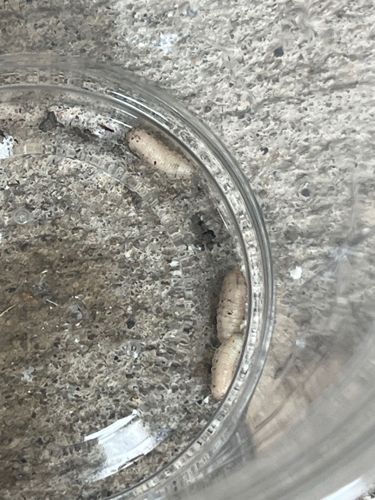Fly Pupae (likely from Calliphoridae or Muscidae families)
Scientific Name: Various species depending on the exact fly; examples include Calliphora vicina, Lucilia sericata (Blow Flies) or Musca domestica (House Fly). Specific identification without the adult or more detailed larval examination is not possible.
Order & Family: Order: Diptera (flies); Family: Likely Calliphoridae (blow flies) or Muscidae (house flies and relatives), based on the appearance of the pupal casing.
Size: Pupae typically range from 5 mm to 15 mm in length, depending on the species.

Natural Habitat
The pupae are typically found in or near the larval feeding site, often in dry soil, under objects, or in cracks and crevices, usually in areas with decaying organic matter (e.g., garbage bins, compost piles, animal carcasses).
Diet & Feeding
The larval stage (maggots) are detritivores or necrophagous, feeding on decaying organic matter such as carrion, feces, or rotting plant material. Adult flies generally feed on liquids, nectar, or decaying substances.
Behavior Patterns
Larvae (maggots) are active feeders, consuming decaying organic matter rapidly. Once mature, they move away from the food source to pupate in drier, often darker, soil or crevices. The pupa is a non-feeding, immobile stage where metamorphosis occurs. Adult flies are active flyers, attracted to decaying matter for oviposition.
Risks & Benefits
Risks: Adult flies can act as vectors for pathogens, transmitting diseases to humans and animals. Larvae can cause myiasis (infestation of living tissue) in unkept wounds or animals. Benefits: Serve as important decomposers, breaking down organic waste. Medically, some maggot species (e.g., Lucilia sericata) are used in maggot debridement therapy for wound care. They are also crucial in forensic entomology to estimate time of death.
Identified on: 8/31/2025